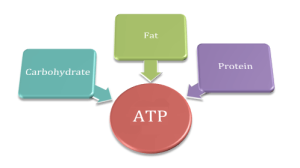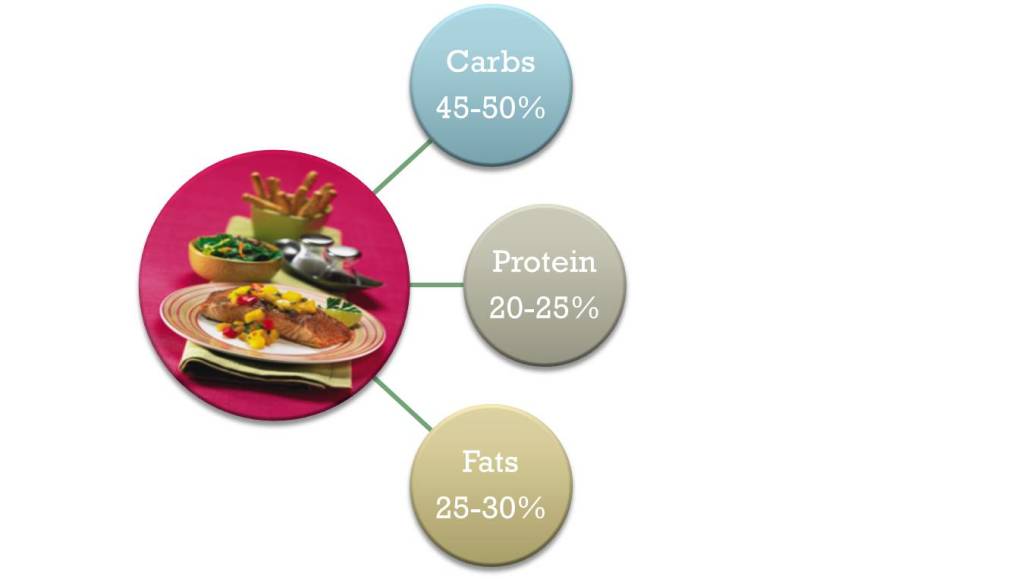 Carbohydrates, Protein or Fat: What makes the most sense to adjust?
Carbohydrates, Protein or Fat: What makes the most sense to adjust?
When it comes to choosing what to eat more of and what to cut back on for weight loss, consider first what you want to achieve. The goal of losing weight is to reduce fat stores while preserving, or even adding, lean tissue—what we refer to as muscle.
Essential to understanding the magic that is a carbohydrate is the process by which our bodies create energy, or Adenosine Tri Phosphate (ATP). Just like gasoline for a car, all of the cells in our body use carbohydrates, fats, and (less-so) proteins to generate molecules of ATP.
Carbohydrates are an important source of fuel for our muscles during exercise and are the only source of energy for our brain and red blood cells. Fat is equally important, playing major roles in everything from brain function to cell structure, but if you’re trying to lose weight, it may not hurt to trade some carbohydrates and/or fat calories for a boost in protein. Calorie for calorie, protein has the most metabolic benefits for weight loss: it increases satiety, stimulates energy expenditure and preserves muscle, which unfortunately is used for energy along with fat during weight loss.
For most, it is perfectly safe to adjust carbohydrate, protein and fat consumption to optimize the diet for weight loss. You may find it beneficial to trade a percentage of your calories from carbohydrates or even fat, for protein calories.
To help you visualize some modest modifications, here’s a table summarizing a couple of options for safely cutting back on calories from carbohydrates and fat while increasing protein intake to optimize the diet for weight loss:
Current Recommendations
The 2010 Dietary Guidelines for Americans recommends eating within the following ranges:
Non-Diet Recommended Ranges (Percent of Calories)
Carbohydrates 45-65%, Protein 10-35%, Fat 20-35%
To help you visualize some modest modifications, here’s a table summarizing a couple of options for safely cutting back on calories from carbohydrates and fat while increasing protein intake to optimize the diet for weight loss:
 Lower Carbhydrate, Higher Protein (Percent of Calories)
Lower Carbhydrate, Higher Protein (Percent of Calories)
Carbohydrates 45 to 50%, Protein 20 to 25%, Fat 25 to 30%
or
Lower Carb & Fat Higher Protein (Percent of Calories)
Carbohydrates 45%, Protein 30%, Fat 25 %
For those primarily interested in cutting calories from carbohydrates, a 1,200-calorie diet with 45% of calories from carbohydrates would provide 135 grams of carbohydrates, thus meeting the RDA of 130 grams. Go below that and it becomes incredibly difficult to hit your daily fiber goal (which also helps with satiety) and you may feel more sluggish during workouts. Hypothetically speaking, a 1,300-calorie diet with as few as 40% calories from carbohydrates (below the recommended minimum) would still meet the RDA for carbohydrates.
 Don’t forget about quality, too.
Don’t forget about quality, too.
The quality of the protein, fat and carbs you eat are just as important as the quantity.
Here are a few things to keep in mind as you adjust your macros:
1. When it comes to carbohydrates, the more complex the better.
The fate of carbohydrates depends on the type of carbohydrate, how fast the carbohydrate is broken down, and how much glucose freed from that breakdown is then used or stored by our body’s cells. When we take in carbohydrates that are not immediately needed for energy, the body will link together glucose molecules into glycogen, and store it.
Complex carbohydrates like vegetables and whole grains, contain fiber which has a beneficial impact both on satiety and blood sugar. Put those on your plate instead of highly refined or simple carbohydrates and sugary treats.
2. Lean protein offers muscle-sparing benefits with very few calories from fat.
Check out this article for some great reasons for adding lean protein to your diet. Why Protein is King For Weight Loss
3. Fats have many benefits ranging from satiety to brain health–especially those rich in omega-3s
See: Six Weeks to a Healthy Diet | Week 4 | Choosing Fats
Choosing Fats Wisely
Fat is the substance in food that provides a rich texture and flavor. The foods that contain the largest amounts of fat come from animal products such as meat, dairy and eggs, plus nuts and seeds. Common examples of cooking fats include olive oil, lard, canola oil, butter, margarine and shortening.
You need to eat fats – good fats are necessary for a healthy body. But you also need to avoid some fats, the bad fats that raise your cholesterol and increase inflammation.
Note: Modest changes in macronutrient intake can be beneficial for weight loss; however, these tweaks may not appropriate for everyone, particularly those with diabetes, kidney disease or other diseases affected by diet composition. As always, it’s best to check with a dietitian or doctor before making these changes, particularly if you have medical concerns.


